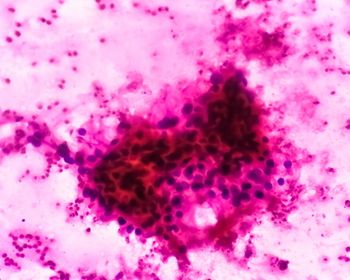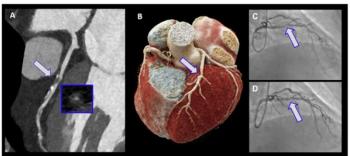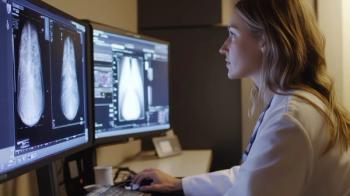
Studies establish primacy of uterine fibroid embolization for most patients
Two major studies have concluded that uterine artery embolization is as good as or better than hysterectomy for treatment of uterine fibroids. Embolization patients recovered faster and were hospitalized for less time than patients who underwent hysterectomy or myomectomy. Complication rates and quality of life improvement were comparable for all three procedures.
Two major studies have concluded that uterine artery embolization is as good as or better than hysterectomy for treatment of uterine fibroids. Embolization patients recovered faster and were hospitalized for less time than patients who underwent hysterectomy or myomectomy. Complication rates and quality of life improvement were comparable for all three procedures.
The multicenter Embolization versus Hysterectomy (EMMY) trial examined 177 women with heavy menstrual bleeding related to uterine fibroids who were scheduled to undergo hysterectomy. Eighty-eight patients were randomly assigned to UAE, and 89 were selected for hysterectomy.
Health-related quality of life measurements, except those related to defecation distress inventory, improved significantly in all UAE patients and a smaller proportion of hysterectomy patients six months after treatment. UAE patients were also more physically active postprocedure than the hysterectomy patients. Quality of life differences between the two groups were no longer measurable after 24 months.
"With UAE, there is a faster recovery time and a shorter hospital stay. Most important, the uterus is not removed," said coauthor Dr. Wouter J.K. Hehenkamp, a gynecology resident at Academic Medical Center Amsterdam in the Netherlands.
In a similar study, data from the Fibroid Registry for Outcomes Data (FIBROID) showed that 90% of the participating women avoided a hysterectomy by undergoing UAE. About 85% reported improved symptoms and quality of life. The registry included three-year data on 1278 patients from 26 sites who underwent UAE.
"These results were achievable in whatever setting the procedure was performed in," said Scott Goodwin, radiology chair at the University of California, Irvine and lead author of the FIBROID study. "It didn't matter whether it was done at an academic center or in a community hospital."
UAE proved to be a durable procedure, with no statistically significant difference between the two-year and three-year success rates, Goodwin said.
Still, researchers conceded that UAE may not be the best option for some patients.
"For those women seeking absolute certainty of being asymptomatic after treatment, I would recommend a hysterectomy," said EMMY coauthor Dr. Jim A. Reekers, an interventional radiologist at the Academic Medical Center of Amsterdam. "But for women who wish to retain their uterus and who desire a fast recovery, I would definitely recommend UAE."
UAE may not be the best choice over myomectomy for older patients who wish to preserve their fertility, Goodwin said. Ovarian failure following UAE is largely age related. Fewer than 1% of 35-year-old women may experience ovarian failure after UAE, but that incidence rate rises to more than 33% in patients over age 48.
"If you had a woman in her midforties who already is going to have a very difficult time getting pregnant and who wants fertility, most people would think long and hard before suggesting UAE was a good idea," Goodwin said.
For more information from the Diagnostic Imaging archives:
Newsletter
Stay at the forefront of radiology with the Diagnostic Imaging newsletter, delivering the latest news, clinical insights, and imaging advancements for today’s radiologists.


























